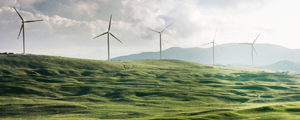

This article uses data released by the International Energy Agency (IEA), and the Organization for Economic Co-operation and Development (OECD) as the main reference. [1] Combining the author’s estimates of ten Southeast Asian countries’ future GDP growth, GDP energy consumption intensity, power consumption and the correlations of historical cooling demand, the author briefly analyzed the cooling demand in the region in the next two decades. The article found that due to the optimistic attitudes towards the future GDP growth, the "Southeast Asia Energy Outlook 2019" issued by EIA may have overestimated the cooling power demand in Southeast Asia from 2020 to 2040.
GDP growth: the single biggest factor influencing changes in energy consumption
Sustainable economic development and urbanization have led to rapid growth in cooling demand in Southeast Asia over the past three decades (1990-2020). Quite a long time in the future, Southeast Asian countries are likely to remain the one of the global economic growth regions. From 2020 to 2040, the cooling power demand growth of this region will bring significant impact on energy investment and construction, therefore it is significant to analyze the future demand for cooling power, especially in the discussion on the long-term energy investment and energy transition issues.
Historical data shows that over the past three decades (1990-2020), Southeast Asian countries had met higher economic growth rates with lower energy growth rates. From 1990 to 2018, the total amount of electricity consumption in Southeast Asia increased from 125TWh to about 900TWh with an annual compound annual growth rate (CAGR) of 7.3%. The growth of primary energy demand increased from 458 Mtoe in 2007 to 643Mtoe in 2016, an increase of 40%, with a CAGR of 3.8%. The Southeast Asian countries' GDP rose from $1.34 trillion in 2007 to $2.76 trillion in 2017, with a CAGR of 7.5%. The growth rate of primary energy demand is about 50% of the GDP growth rate. Electricity demand growth, cooling power consumption growth and GDP growth rate are not much different. Cooling power consumption in 10 Southeast Asian countries increased from 10TWh in 1990 to 80TWh in 2018, with a CAGR of 7.7%. However, the share of total electricity consumption changed little, slightly increasing from 8% to 9%.
The IEA has a risk of overestimating cooling power consumption
There are two main reasons why GDP growth in Southeast Asia is unlikely to be the same over the next two decades as it was in the previous decades. Firstly, from 1990 to the first 15 years of this century, globalization was in rapid rise, the period marked by China's economic rise was a golden age for the development of Southeast Asia, and since 2015 globalization development has experienced both "predictable" and "unforeseeable" challenges. Looking to the future of twenty or thirty years, the economic globalization trend is bound to become slow, so globalization is a major factor influencing the economic growth of Southeast Asian countries. In addition to COVID-19, Southeast Asia will encounter difficulties in economic growth during the short period (2-3 years), and negative GDP growth in some countries is also expected. The medium - and long-term impact of COVID-19 remains uncertain, and the appropriate response to the pandemic will also determine the medium - and long-term economic growth trend.
Secondly, economic growth forecasts for Southeast Asia have been revised down after a period of rapid development. Based on factors such as population size and political economy, Indonesia and Vietnam will be key factors in determining Southeast Asia's future economy growth rates to remain high. In 2017, OECD predicted that the average annual GDP growth rate of Southeast Asia could reach 5.2% from 2018 to 2022. [2] However, in the forecast released at the end of 2019, it had lowered the growth rate forecast and estimated the annual GDP growth rate of 2020-2024 to be 4.9%, which is made without considering the impact of COVID-19. [3] From 2011 to 2015, the real GDP growth in Southeast Asia averaged 5.1%. Assuming that the CAGR of Southeast Asia's GDP in 2020-2030 and 2030-2040 are 5% and 4%, respectively, CAGR of primary energy consumption and power consumption in the same period could be 2.5%, 2% and 5% and 4%, respectively, based on the previous historical experience of the relationship between primary energy and power growth and GDP growth. Since past experience shows that the growth rate of cooling power consumption is also in line with GDP, we also assume that the CAGR of cooling power consumption is 5% in 2020-2030 and 4% in 2030-2040. Furthermore, we assume that cooling power consumption will also grow at a 5% annual rate in 2019 and 2020, which is in line with GDP growth. Thus, the cooling power consumption demand in Southeast Asia will reach 144TWh and 213TWh by 2030 and 2040, respectively. The IEA forecasts that cooling power demand in Southeast Asia will reach 330TWh by 2040 and estimates that cooling power consumption will increase from 9% of total electricity consumption in 2018 to about 16% by 2040. [4]
According to the IEA's forecast, the CAGR for cooling power consumption in Southeast Asia will be 6.7% from 2018 to 2040. This growth rate clearly far exceeds the 5% CAGR (2020-2030) and 4% CAGR (2030-2040) forecast in this article for GDP growth over the same period. The IEA does not seem to have a clear explanation for why the growth in cooling power consumption relative to GDP will be significantly higher over the next two decades than the 20 years before.
Forecasting long-term energy demand: Consider slower economic growth scenarios
The long-term prediction of future energy demand is highly uncertain. The current risks of de-globalization and the impact of COVID-19 have made it more difficult to predict long-term energy demand. Nevertheless, forecasting is of great value, based on the need for strategic decisions, especially from the perspective of energy supply and demand balance. The vast majority of countries in Southeast Asia still have opportunities for economic rapid growth, although achieving high growth levels before sustaining them in the future will be more challenging.
Energy use and power consumption increase with GDP growth, and GDP growth is the most important factor influencing the forecast of demand. In order to explore energy investment and energy transition strategy based on demand, if it can within the scope of the long-term (more than ten years) to analyze GDP growth in different scenarios, especially given the possible slower economic growth situation, it will be more helpful to understand the gap to the real magnitude of the energy challenges and to make more realistic strategies and decisions.
Note:
[1] Energy data in this paper are from IEA, and GDP growth data are from OCED.
[2] Economic Outlook for Southeast Asia, China and India, 2018. OECD, 2018
[3] Economic Outlook for Southeast Asia, China and India, 2020. OECD, 2020
[4] Southeast Asia Energy Outlook 2019, IEA, PAGE 128.
Author: Zhao Ang
Proofread by Ying Li
Translated by Lu Ye
This article is an original article by Rock Environment and Energy Institute
For cooperation and authorization, please send email to: liying@reei.org.cn




